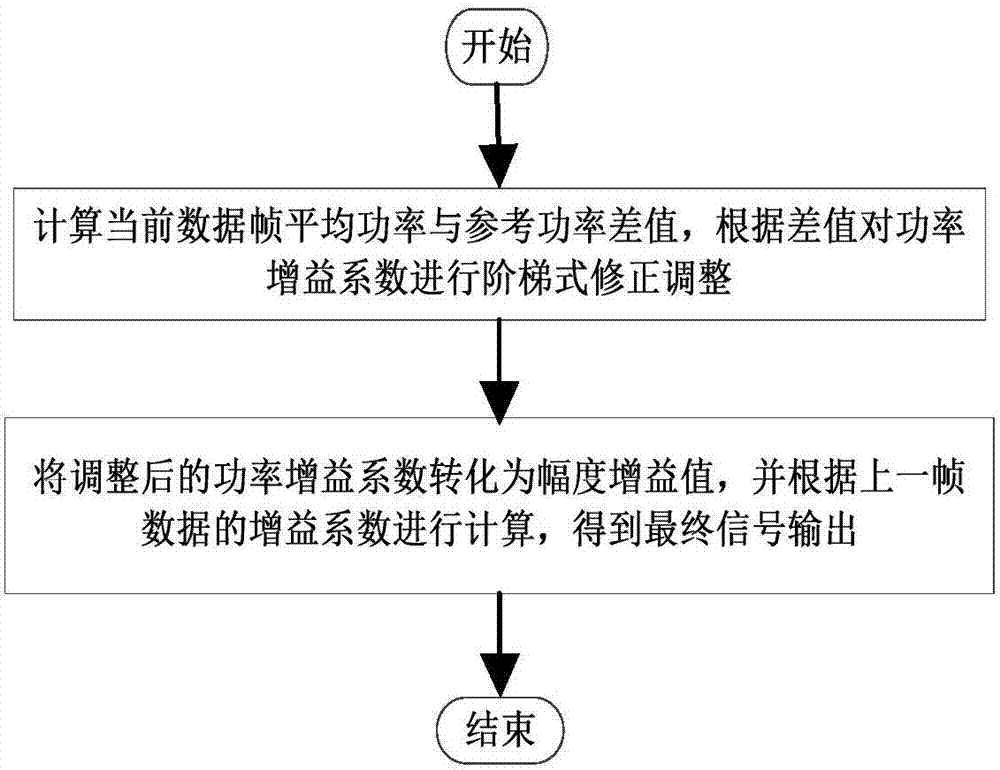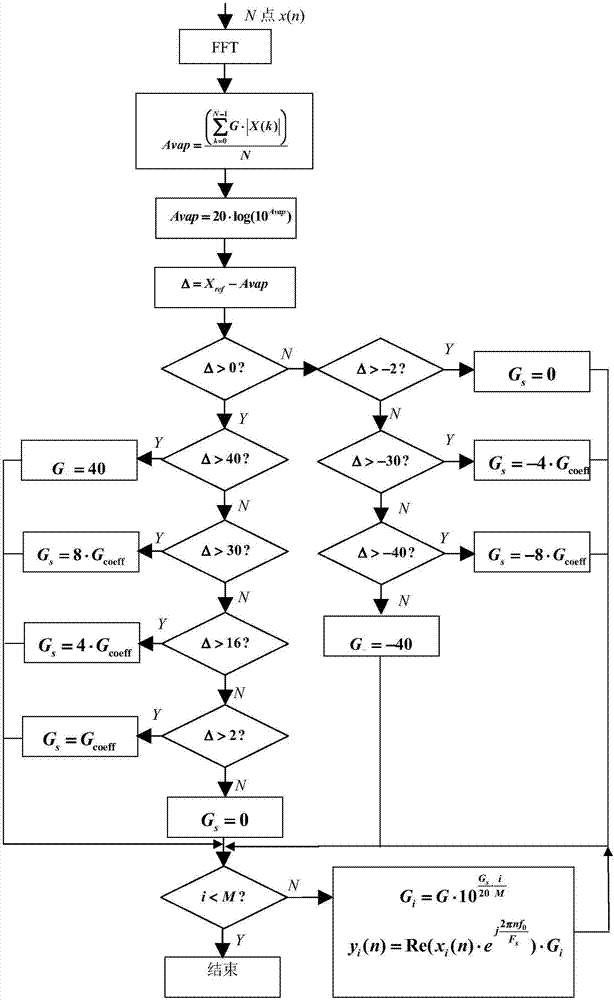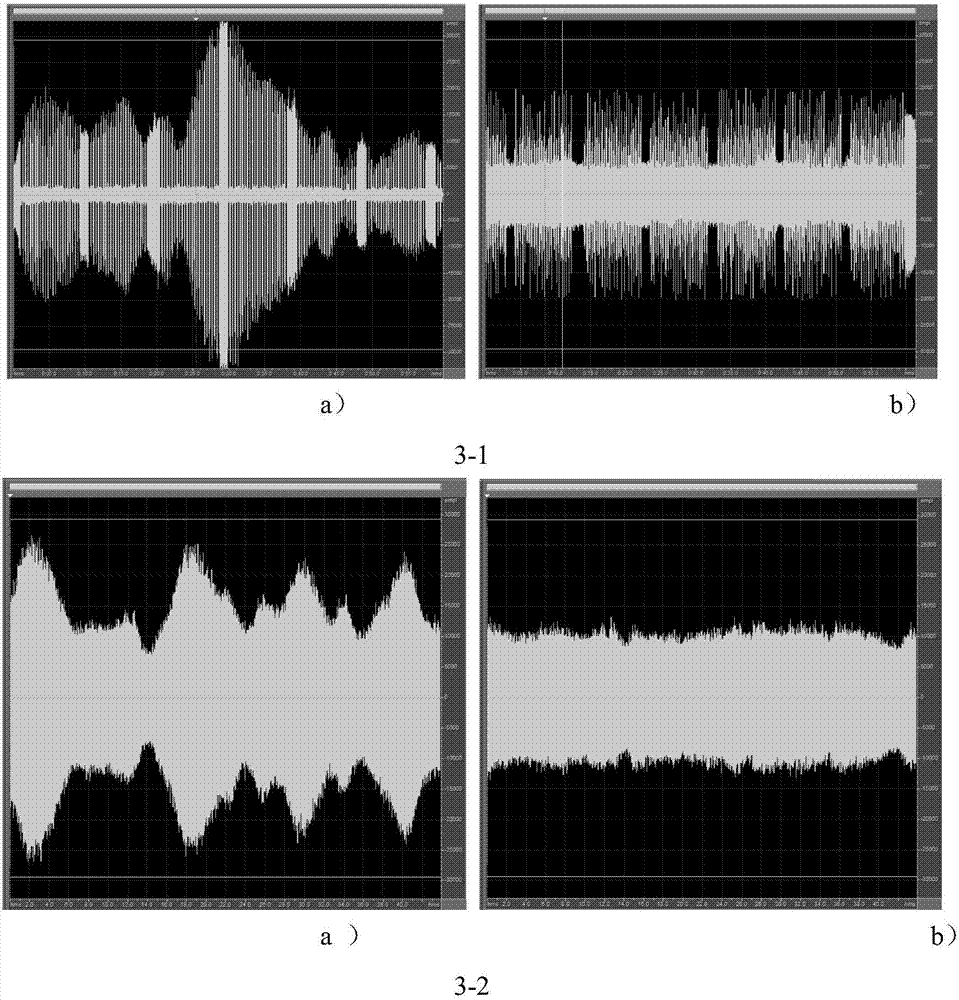Digital automatic gain control method for narrow-band signal after broadband system channelization
An automatic gain control and narrowband signal technology, applied in wireless communication, power management, electrical components, etc., to achieve the effect of simple method, high reliability, and strong practical application value
- Summary
- Abstract
- Description
- Claims
- Application Information
AI Technical Summary
Problems solved by technology
Method used
Image
Examples
Embodiment 1
[0037] Embodiment one, see figure 1 As shown, a digital automatic gain control method for channelized narrowband signals in wideband systems comprises the following steps:
[0038] Step 1. Calculate the difference between the average power of the current data frame and the reference power, and perform stepwise correction and adjustment of the power gain coefficient according to the difference;
[0039] Step 2. Convert the adjusted power gain coefficient into an amplitude gain value, and perform product calculation according to the gain coefficient of the previous frame data to obtain a final signal output.
[0040] The present invention first calculates the difference between the average power of the current data frame and the power reference, and adjusts the step power gain coefficient according to the difference using a parabolic nonlinear method; converts the power coefficient into a gain value, And the "stepped" correction method is used to adjust the signal gain coeffici...
Embodiment 2
[0041] Embodiment two, see Figure 1~3 As shown, a digital automatic gain control method for channelized narrowband signals in wideband systems includes the following content:
[0042] 1) Calculate the difference between the average power of the current data frame and the reference power, and perform stepwise correction and adjustment of the power gain coefficient according to the difference, including the following:
[0043] 1) Assuming that the frame length of the current received signal data is N, perform radix 2-FFT operation on N point samples to obtain the frequency domain data of the current received signal; perform radix 2-FFT operation on N point samples, including the following content: by calculating The formula completes the conversion from the time domain to the frequency domain, and the formula is as follows:
[0044]
[0045] Among them, X(k) is the frequency domain data of the currently received signal; N is the number of data points, and the value is an in...
PUM
 Login to View More
Login to View More Abstract
Description
Claims
Application Information
 Login to View More
Login to View More - R&D
- Intellectual Property
- Life Sciences
- Materials
- Tech Scout
- Unparalleled Data Quality
- Higher Quality Content
- 60% Fewer Hallucinations
Browse by: Latest US Patents, China's latest patents, Technical Efficacy Thesaurus, Application Domain, Technology Topic, Popular Technical Reports.
© 2025 PatSnap. All rights reserved.Legal|Privacy policy|Modern Slavery Act Transparency Statement|Sitemap|About US| Contact US: help@patsnap.com



